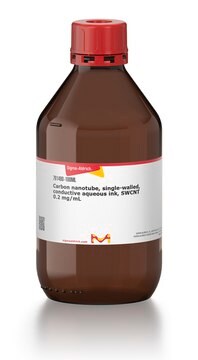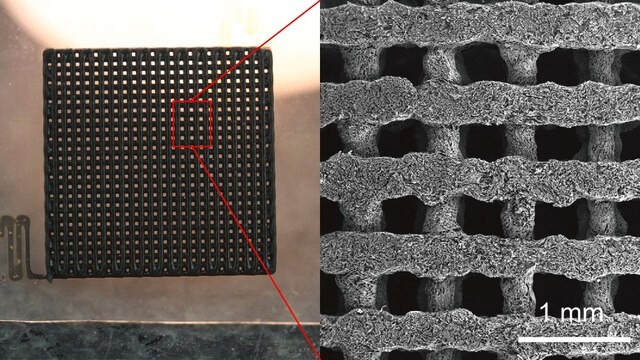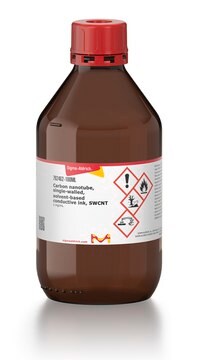805556
Graphene dispersion
In water, flexo/gravure/screen printable
Sinónimos:
conductive ink, graphene ink
About This Item
Productos recomendados
Nombre del producto
Graphene ink in water, flexo/gravure/screen printable
Quality Level
form
liquid
concentration
7 wt. % solids in water
sheet resistance
10 Ω/sq, 25μm thickness
particle size
500-1500 nm (exfoliated graphene flakes)
viscosity
140 cP (1000s-1)
570 cP (100s-1)
¿Está buscando productos similares? Visita Guía de comparación de productos
Categorías relacionadas
Application
- Typical substates: glass, paper.
- Drying Condition: 100°C for 10min.
Storage Class
12 - Non Combustible Liquids
wgk_germany
WGK 1
flash_point_f
Not applicable
flash_point_c
Not applicable
Elija entre una de las versiones más recientes:
Certificados de análisis (COA)
¿No ve la versión correcta?
Si necesita una versión concreta, puede buscar un certificado específico por el número de lote.
¿Ya tiene este producto?
Encuentre la documentación para los productos que ha comprado recientemente en la Biblioteca de documentos.
Los clientes también vieron
Artículos
Advanced technologies for energy conversion and storage are widely sought after for their potential to improve consumer and electronic device performance as well as for the prospect of reducing the societal and environmental impact of energy generation.
Since its discovery little more than a decade ago,1 the two-dimensional (2D) allotrope of carbon—graphene—has been the subject of intense multidisciplinary research efforts.
Professor Tokito and Professor Takeda share their new materials, device architecture design principles, and performance optimization protocols for printed and solution-processed, low-cost, highly flexible, organic electronic devices.
Nuestro equipo de científicos tiene experiencia en todas las áreas de investigación: Ciencias de la vida, Ciencia de los materiales, Síntesis química, Cromatografía, Analítica y muchas otras.
Póngase en contacto con el Servicio técnico







